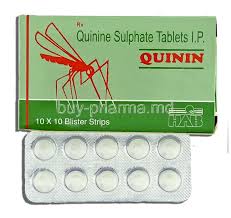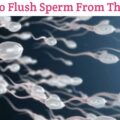What is Quinine?
Quinine is a prescription drug used as an antimalarial drug indicated only for treatment of uncomplicated Plasmodium falciparum malaria. Quinine sulfate has been shown to be effective in geographical regions where resistance to chloroquine has been documented.
You may be prescribed quinine for cramps in the leg if the cramps regularly disrupt your sleep, or are very painful. Taking quinine is generally only recommended if other treatments (such as stretching exercises and massaging the affected muscle) have been tried first and not been successful.
Quinine is likely to reduce the number and/or the severity of your leg cramps, but it may not stop them altogether. When quinine is first prescribed it will be done on a trial basis for a few weeks, as it may take this amount of time for you to start to feel the benefit.
Can White Quinine Flush Out Sperm?
Some people may want to remove semen from their vagina after sex because they believe that it is more hygienic or hope that doing this can prevent pregnancy. Although anecdotal evidence suggests that there are ways to remove semen from the vagina, there is no scientific proof to support these claims.
White Quinine is not a contraceptive and studies show that pregnancies exposed to quinine or chloroquine and carried to term did not have increased rates of congenital abnormality, stillbirth or low birth weight. These results suggest that therapeutic doses of quinine and chloroquine are safe to use in the first trimester of pregnancy. However, large doses of this drug can induce abortion; congenital malformations of the auditory and optic nerves have been reported after this drug failed to induce abortion.
Literature review suggests that quinine is an ineffective abortifacient, even when taken in toxic (high) doses. Adverse effects of quinine include cinchonism, potentially fatal renal failure, and possible teratogenesis. There is no scientific evidence to support the use of quinine to prevent pregnancy. Historically, quinine has been used for a variety of purposes, including as a treatment for leg cramps and as a tonic water additive for its bitter taste. However, it is not an effective method of contraception and should not be used for this purpose. In fact, quinine can have serious side effects if taken in high doses, including headaches, nausea, vomiting, blurred vision, and in severe cases, cardiac arrhythmias and death.
It is important to use reliable methods of contraception to prevent unwanted pregnancy. There are many safe and effective forms of birth control available.
How to Effectively Prevent Pregnancy
Forget about Quinine, Andrews Liver salt, Lime, Ampiclox, Alabukun, Salt and hot water, 7up, Alum, Aloe vera and Neem they are not effective methods of preventing pregnancy. For those who do not wish to get pregnant, there are several ways to prevent pregnancy. People typically use hormonal and non-hormonal birth control methods, but some individuals may also consider natural or surgical methods to prevent pregnancy. Effective methods of preventing pregnancy include;
The Condom: The condom is the only form of contraception that protects against most STIs as well as preventing pregnancy. This method of contraception can be used on demand, is hormone free and can easily be carried with you. And it comes in male and female varieties.
The Oral Contraceptive Pill: It’s the little tablet taken once a day. The oral contraceptive pill is the most commonly reported method of contraception used by Australian women. There are a few different types of pill to choose from, so it’s about finding the one that’s right for you. The combined pill contains estrogen and progestin and mini pill contains only one hormone, a progestin. The pill can have many benefits, however remembering to take it on time is a must.
Intrauterine Device (IUD): This small, T-shaped device is made from a material containing progesterone hormone or plastic and copper and is fitted inside a woman’s uterus by a trained healthcare provider. It’s a long-acting and reversible method of contraception, which can stay in place for three to 10 years, depending on the type. Some IUDs contain hormones that are gradually released to prevent pregnancy. The IUD can also be an effective emergency contraception if fitted by a healthcare professional within five days (120 hours) of having unprotected sex. IUDs containing coppers are 99% effective and the ones containing hormones are 99.8% effective, so you’re about as protected as you possibly can be by a contraceptive method.
The Contraceptive Implant: In this method, a small, flexible rod is placed under the skin in a woman’s upper arm, releasing a form of the hormone progesterone. The hormone stops the ovary releasing the egg and thickens the cervical mucus making it difficult for sperm to enter the womb. The implant requires a small procedure using local anesthetic to fit and remove the rod and needs to be replaced after three years.
The Contraceptive Injection: The injection contains a synthetic version of the hormone progestogen. It is given into a woman’s buttock or the upper arm, and over the next 12 weeks the hormone is slowly released into your bloodstream.
Emergency Contraception Pill (The ‘Morning After’ Pill)
The Emergency Contraception Pill can be used to prevent pregnancy after sex if contraception wasn’t used, a condom has broken during sex, or a woman has been sexually assaulted. While it is sometimes called the ‘Morning After’ pill, it can actually be effective for up to five days after having unprotected sex. The sooner it is taken, the more effective it is; when taken in the first three days after sex, it prevents about 85% of expected pregnancies. This pill contains special doses of female hormones. Any woman can take the emergency contraception pill, even those who cannot take other oral contraceptive pills. It can be bought over the counter at a pharmacy or chemist without a prescription. Examples include: Postinor 1, Postinor 2, Postpill, and Levon 2
The common side effects of the emergency contraceptive include nausea, vomiting and the next period may be early or delayed. Emergency contraception does not protect against STIs. Emergency contraception can be used after having sex to prevent pregnancy.
Contraceptive Ring
This method consists of a flexible plastic ring constantly releasing hormones that is placed in the vagina by the woman. It stays in place for three weeks, and then you remove it, take a week off then pop another one in. The ring releases the hormones oestrogen and progestogen. These are the same hormones used in the combined oral contraceptive pill, but at a lower dose.
Diaphragm
A diaphragm is a small, soft silicon dome placed inside the vagina to stop sperm from entering the uterus. It forms a physical barrier between the man’s sperm and the woman’s egg, like a condom. The diaphragm needs to stay in place for at least six hours after sex. After six – but no longer than 24 hours after sex – it needs to be taken out and cleaned.






